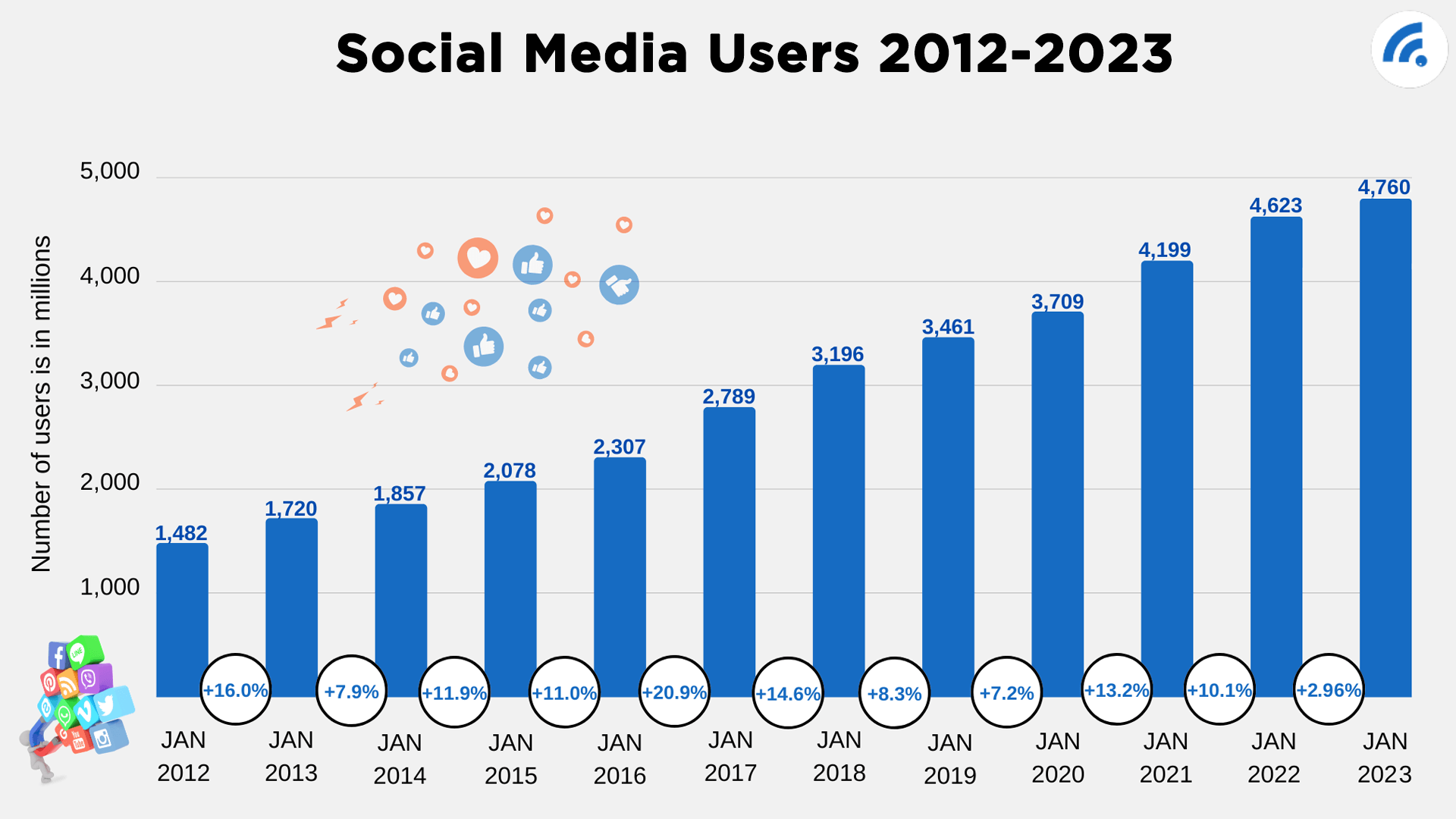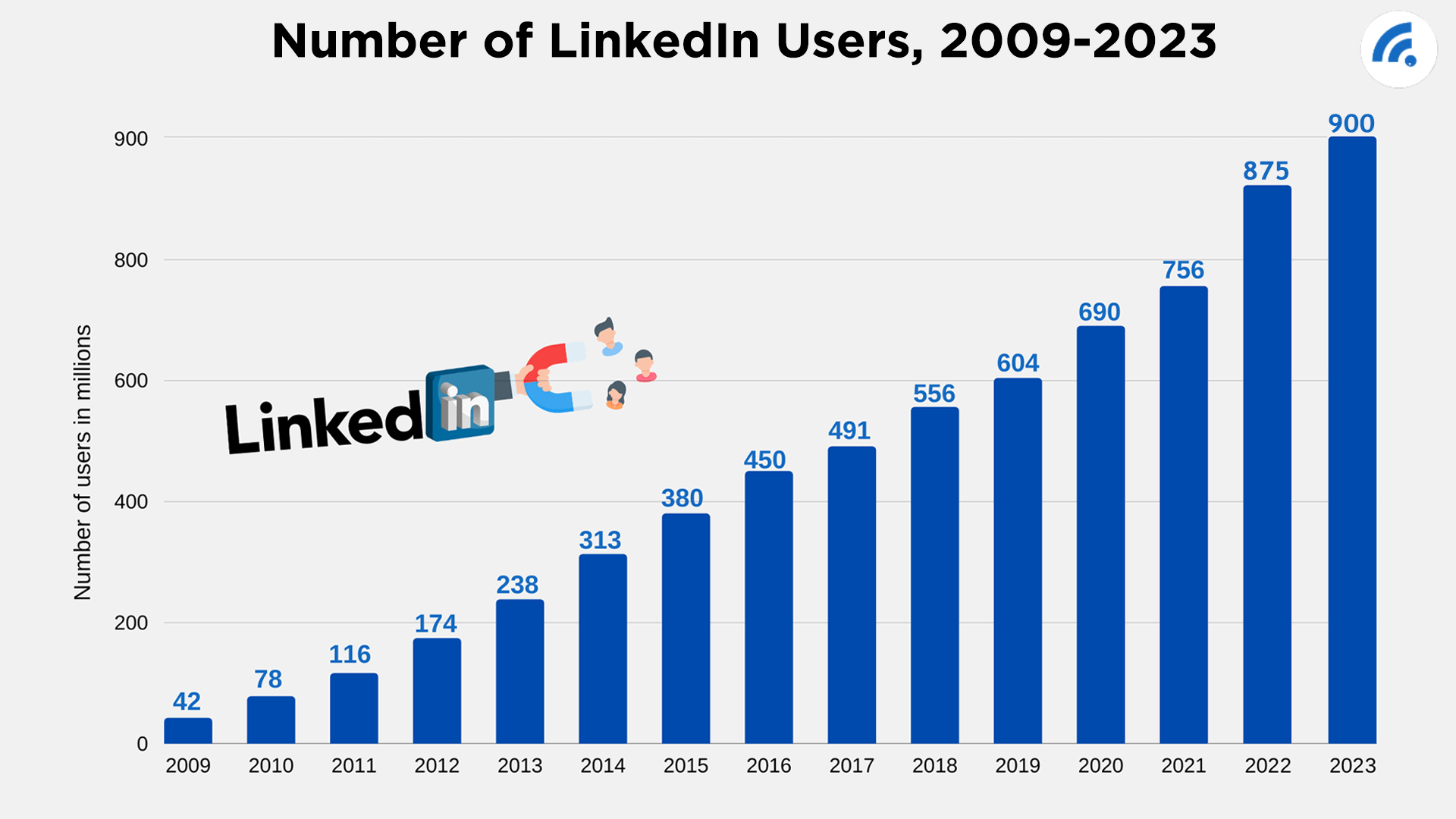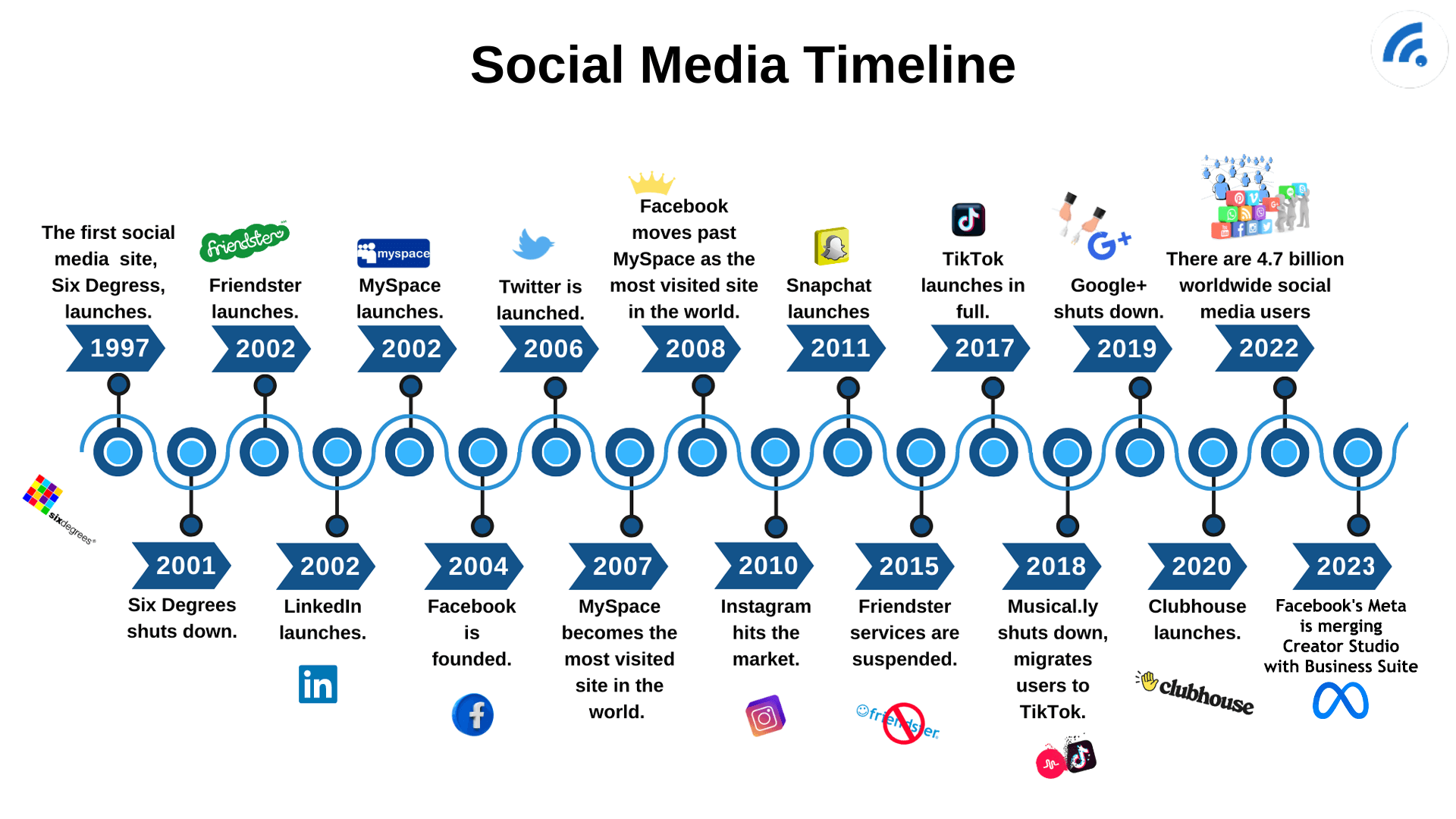Social media has become such an important part of our lives that it's easy to think it has always been there. However, knowing that social media can't exist without the internet, some simple math should tell us social media can't be more than 30 years old (the internet started becoming mainstream in the early 1990s).
However, believe it or not, social media is even younger than that. In fact, it wasn't until the late 1990s that it really became popular however it took even longer, until around 2005, for it to become the social and cultural institution it is today.
There are a few reasons for this, but perhaps the most significant is the now universal nature of smartphones. We can access the internet from pretty much anywhere, which means social media is never more than a few clicks away, which wasn't the case until the iPhone hit the market back in 2007.
Furthermore, it took some time for the tech companies to figure out why people wanted to use social media in the first place. This is why we see so many companies in the early years of social media get very popular quickly but then fail dramatically. For example, remember when MySpace was a thing? And how many of us had a Friendster profile? These sites were all the rage, but they quickly died out and are forgotten forever. However, thanks to Mark Zuckerberg and the company, they finally found the right formula, and social media as we know it was born.
Social Media Use Over the Years
To give you an idea of just how turbulent social media history has been, take a look at the following graph depicting the number of social media users over the years:

[Source]
Social media is clearly growing rapidly, and this kind of rapid growth is bound to produce lots of change as companies, and users, try to figure out what they want. This means that while social media has been growing constantly for the past twenty years, there have been many ups and downs.
What is Social Media?
Social media is defined as any type of communication within a group. In this sense, social media has been around since the times of town criers and messenger pigeons.
However, it's not hard to see how the term social media as used today refers to a very different type of communication, and while most of us understand what social media is when we see it, there is still a lack of total consensus as to what it means.
But if we combine the many different definitions out there, we come up with this:
Social media is online communication designed to create networks and communities where information, ideas, messages, photos, etc., can be freely shared.
It's easy to see how social media could be traced back hundreds if not thousands of years, but today we understand social media as something that takes place online, which means we only need to go back a few decades to find the beginning of social media.
The Invention of Social Media
Those who have seen The Social Network may be under the impression that social media was created when Mark Zuckerberg and his friends got together on Harvard's campus to create "TheFaceBook." While Facebook did play an important role in making social media popular, it was hardly the first site.
In fact, social media was officially born in 1997, but the roots of social media trace back even further to the early 1990s and the birth of the blogosphere. Blogs planted in people's heads the idea that you could log onto the internet and post whatever you wanted and receive feedback about it without having to go through a third party. It was truly revolutionary, and it opened the door for the social media revolution that was about to occur.
Social Media Timeline
The history of social media is defined by change. An initial flurry of new sites emerged at the turn of the millennium, but by the end of the 2000s, Facebook emerged as the leader, a position it still holds today.
Several new players have entered the scene in the past decade, yet only time will tell if they can continue their success or if they will fall like so many have before.

1997 - Six Degrees
Although blogging gave birth to the concept that would eventually turn into social media, it wasn't until 1997 that we had a website that resembles what we now understand to be social media. This site, Six Degrees, allowed users to make their own personalized profiles but to communicate with other users, one needed to "add" another person's profile, which is an early example of "Friending" someone.
The name of this site comes from the "Six Degrees (of Kevin Bacon)" theory that states we are all related to one another within six degrees of separation (although there's evidence to suggest it might be less).
The site became quite popular after its launch - it had 3.5 million users at its most popular - but by 1999, the handwriting was on the wall. The site was bought by Youthstream Media, and by 2001 it was shut down.
Six Degrees didn't last because of a problem common to all early social media sites: monetization. It was customary to offer these services for free, but this meant using ads to generate revenue, which often interfered with the experience.
However, people knew this kind of website was valuable, which is why Six Degrees was sold for around $120 million, though this number is quite small compared to the valuations that would come later on in social media history.
2002 - Friendster
In 2002, a few years after Six Degrees was bought out and sold, Friendster launched. It was similar to Six Degrees in those users needed to create a profile and add friends to their network to interact. However, it went further than Six Degrees in that it allowed people to share videos and photos and message other people on the network.
These exciting new features made Friendster incredibly popular at the time of launch. In fact, it had more than three million users after just a few months, and in 2008, it surpassed the 100 million user mark. Of course, we all know that Facebook currently has billions of users, but Friendster did considerably better than any other site before it.
Friendster also stood up better against the test of time than Six Degrees, although it would also fail in the end. It continued to be used until 2011, when it was converted into a social gaming platform, and all services were suspended in 2015. However, Friendster helped make social media more popular than ever, setting the stage for a revolution.
2002 - LinkedIn
Somewhat surprisingly, the next social media site to appear on the scene was LinkedIn. It first launched in December 2002 as a site focused on helping professionals build a network, which remains its purpose to this day.
The number of LinkedIn users has grown considerably over the years, with most of the growth occurring alongside other social media sites. More specifically, LinkedIn has experienced a 1,262 percent increase in the number of users in the past ten years.

[Source]
2002 - MySpace
Those who don't mistakenly credit Facebook with being the original social media site usually think MySpace was first on the scene. And while it's true there were several sites already in operation by the time MySpace launched; it's also true that Myspace completely changed the game.
It officially launched in 2002, a decidedly big year for social media, and by 2005 it had around 20 million unique visitors to the site every month. In that same year, Rupert Murdoch's company, NewsCorp, bought the sight for over $580 million.
Then, over the next few years, MySpace continued to gain in popularity, so much so that by 2008 it had just under 80 million unique monthly visitors and was valued at $12 billion. At that time, it was also the #1 most visited website in the world, according to Alexa traffic rankings; today, it is ranked in the 4,000s.
Part of MySpace's success came from the interactive platform that made it incredibly easy to share photos, videos, and other files. It's also true that MySpace entered the fray at a time when the internet was more popular and widespread. Millennials were entering high school and college, which meant the world was finally ready for social media.
However, as we know, based on the number of people currently using MySpace, the site's success would not last. A big part of this was because Myspace, beginning in 2004, had to compete with Facebook, rapidly becoming one of the most popular sites worldwide. This meant that by 2007, when it had 300 million users, MySpace was at its peak. It sold in 2011 for $35 million, and Time, Inc. later bought it in 2015. It still exists today and has a niche following, but it is a mere shadow of the giant it once was.
2004 - Facebook
By 2004, social media had become quite popular. However, when Mark Zuckerberg and his friends, Eduardo Saverin, Andrew McCollom, Dustin Moskovitz, and Chris Hughes created TheFaceBook, social media quickly became integral to our lives.
Initially only available to those with an "@harvard.edu" email address, Facebook quickly expanded to the rest of the Ivy League and Stanford and MIT until opening its doors in 2006 to anyone over the age of 13.
Once it did this, there was no stopping Facebook's growth. In 2008, it overtook MySpace as the most-visited site in the world, and it currently sites at #3 behind Google and YouTube. In 2012, the company went public at a market value of $104 billion, one of the largest IPOs of all time, and it continues to be one of the most profitable companies in the world.
In recent years, Facebook has seen slightly slower growth as the market becomes saturated, and it has also been the subject of some heated privacy debates. However, it remains people's top choice for social media, which means we can expect it to remain for many years to come.

2006 - Twitter
Although the name Twitter is just as well-known as Facebook, it has never reached the same level of popularity as its biggest rival, despite launching just two years after it in 2006.
In an attempt to do something different, Twitter limited people to just 140-character posts. This idea did work, although it took the site nearly four years to reach thirty million monthly users. However, in the past ten years, that number has grown to over 300 million.
In 2013, the company went public and received a valuation of $14.2 billion. Yet the company struggled to make a profit, needing until 2018 to post its first-ever profitable year.
But there are signs that Twitter might be entering a decline; it has been losing monthly users ever since the end of 2017, and the company has a current market value of around 4 billion, making it about two-thirds less valuable than when it first went public. However, some argue that fewer users make Twitter more profitable, so while it may shrink, it may also stand the test of time.
2010 - Instagram
A late entry, Instagram was first launched in 2010. As we know, it was unique because it specialized in photo- and video-only posts and only allowed photos to be framed in a square. It was marketed to those interested in taking beautiful, artsy photos that they could share with their friends.
Instagram became an instant sensation. It reached one million users just a few months after it launched, and it now more than one billion people are out there "doing it for the gram," making it one of the most popular social media sites in the entire world. In 2012, just two years after its launch, Facebook bought Instagram for around $1 billion. Today, were Instagram to stand alone, it would have an estimated market value of around $100 billion.
2011 - Snapchat
Another relative newcomer, Snapchat, has been around since 2011. It is particularly popular among young people, and it has a little under 200 million users. It's unique in that users can send each other photos that will disappear in just seconds, and it also has the "24-hour story" option that gives people the chance to load up multiple photos as part of a story that lasts 24 hours.
The site has more than quadrupled its number of users in the past five years, and it was valued at $31 billion during its initial public offering in 2015. However, this number has tumbled in recent years as the company struggles to make a profit. So, while it's certainly an important part of social media today, it's possible it might just be a blip on the radar in the grand scheme of things.
2016 – TikTok
While there have been plenty of other social media networks to come into prominence (or a vague idea of people knowing what it is), there is nothing that has taken the social media world by storm the past few years like TikTok, the video content social media app that practically everyone young is using and everyone older is wondering about.
Launched in 2016 and coming to prominence in 2017, TikTok has, by this point, built a userbase of more than a billion people and every potential influencer wants to be the next star on the platform. There is controversy surrounding it, to be sure, with some calls to ban the platform, but for the moment, it dominates.
Social Media Since 2020
Looking at some of the biggest stories of the last few years, we can notice a few trends and stories to follow, even if we don’t know their end results yet:
- We cannot yet understand the hopes for Mark Zuckerberg’s Metaverse, though we do know that a lot of money is being thrown at it, and it could be the future. On the other hand, it could be a flop if it is just another lackluster social VR platform, which would be inconvenient to use.
- There have been and will be social media platforms that launch, most people don’t hear about, and then die. Most can be ignored, but some may possibly have ideas that get used by other platforms.
- Video is the next big frontier with social media as internet connections improve, and more people have better cameras. Instagram is growing in its video efforts, and TikTok’s success speaks for itself.
Social Media Around the World
However, perhaps the most interesting thing to happen in the past 10 years of social media history is the growth of social media around the world. Social media is now a global phenomenon, originally confined to the US and Europe.
Websites such as WeChat and QZone have become immensely popular in China, where Facebook and other social media sites are not allowed to operate, making them some of the most widely-used platforms in the world. Furthermore, as the internet spreads around South America, Asia, and Africa, more and more people are using social media, a trend we can expect to continue well into the future.
Conclusion
In just a few decades, social media has gone from being nothing more than a concept to an integral part of life. It has brought us together and made communication easier, but it has also raised some interesting questions about privacy and freedom of speech. This means our conversations around these issues will very much determine the role social media plays in our lives moving forward.
However, no matter what happens, it's easy to see how social media has changed our lives and how it will continue to do so well into the future.

